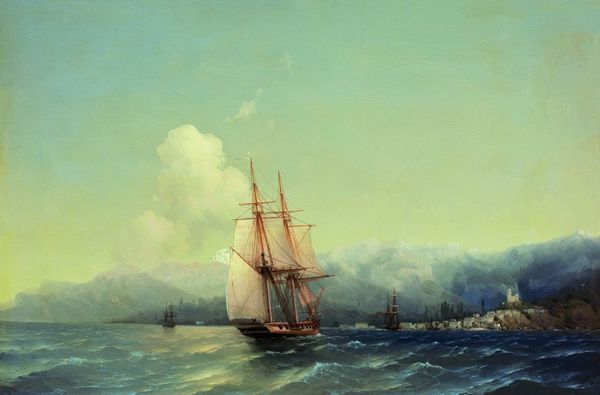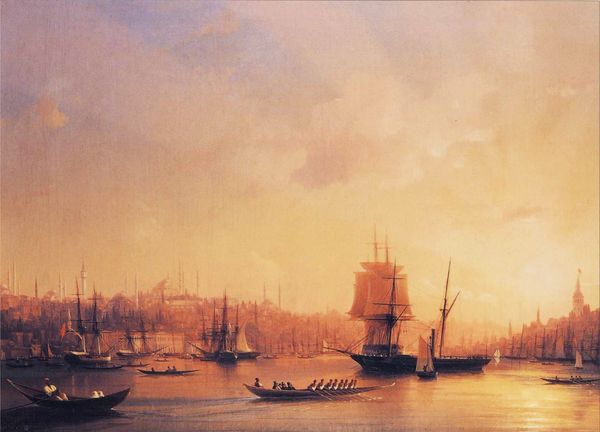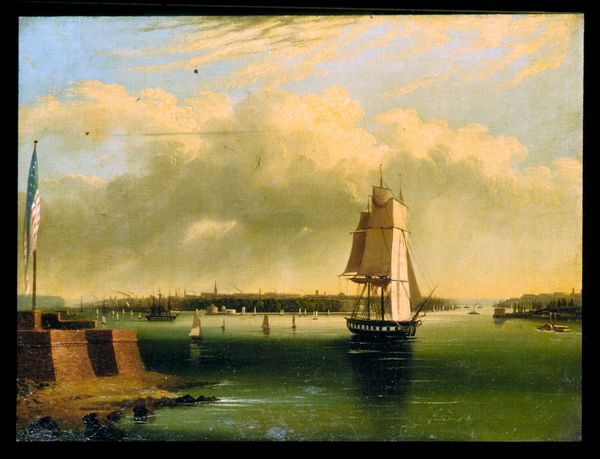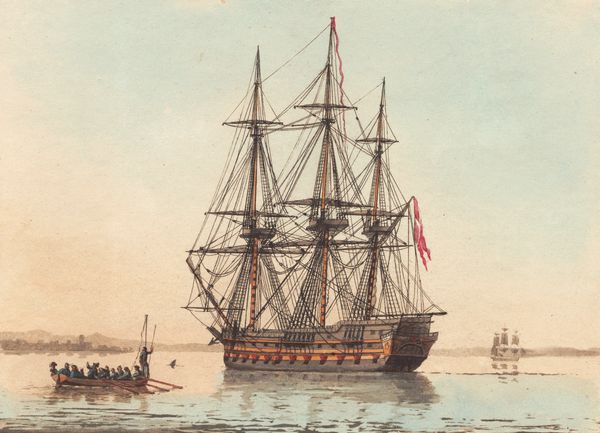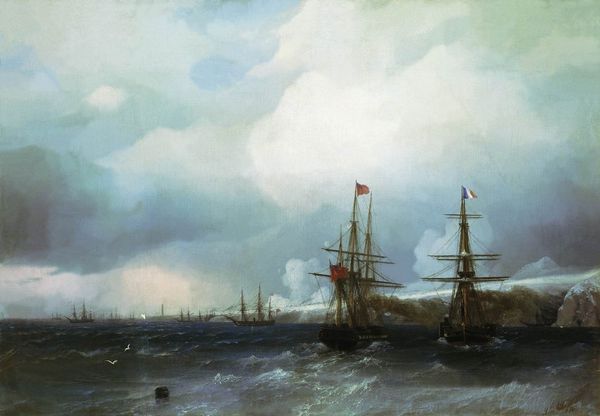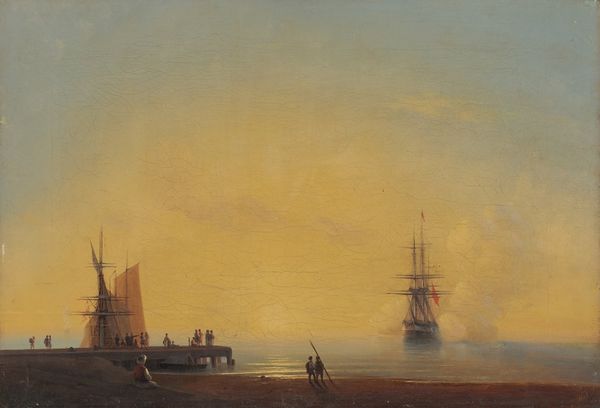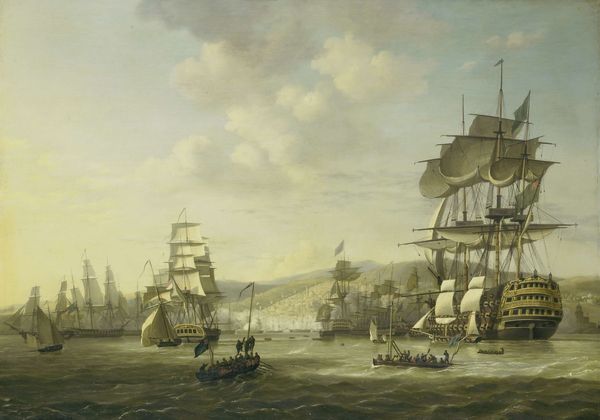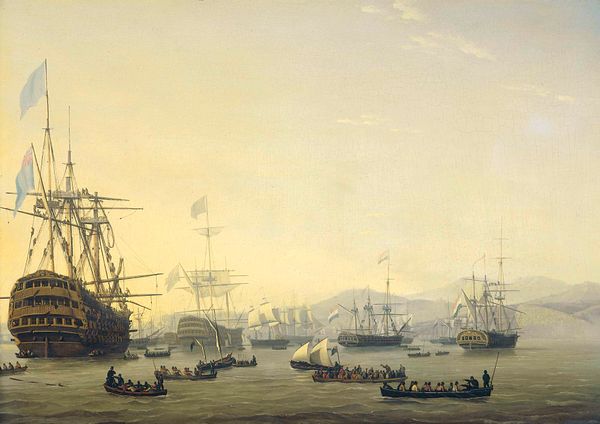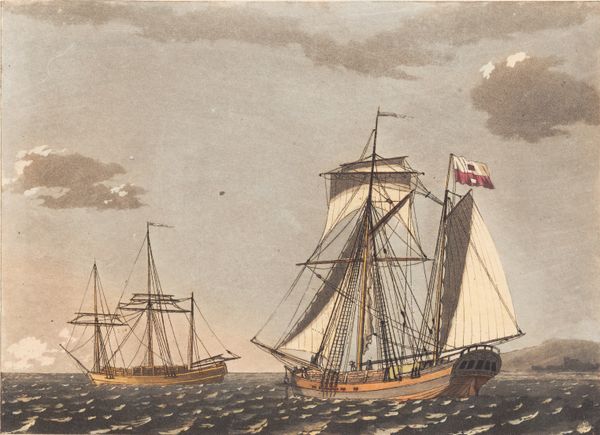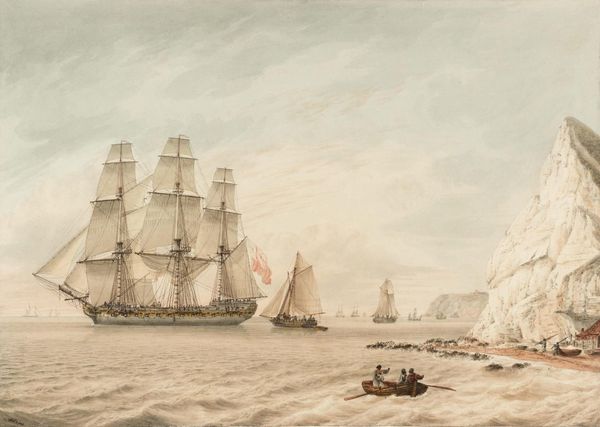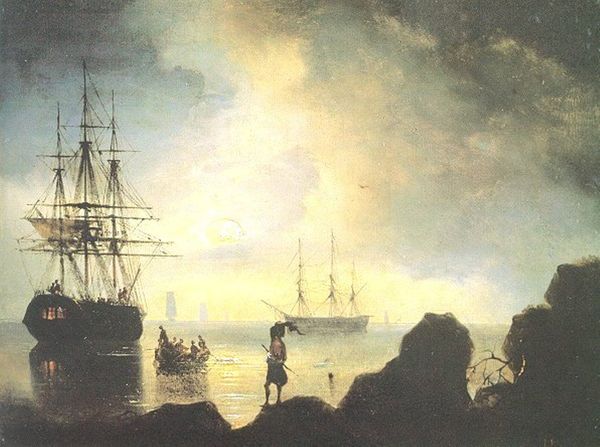
Copyright: Public domain
Ivan Konstantinovich Aivazovsky made this painting of the Raid on Sevastopol using oil paints. Oil paint allows for a high degree of realism, but also for the creation of atmospheric effects, like the smoke and haze Aivazovsky uses so effectively here. The fine weave of the canvas supports this level of detail. But beyond just its mimetic function, the painting embodies the vast networks of trade and industry crucial to naval power, and to artistic production itself in the nineteenth century. Consider the pigments used. Ultramarine, for instance, would have been made from lapis lazuli, sourced from mines as far away as Afghanistan. Likewise, the canvas, woven from flax, and the wood for the stretcher bars would have been products of agriculture and milling. Even the brushes would have involved animal husbandry and skilled manufacture. So, even though the painting depicts a specific military action, it also encapsulates a world of labor, resource extraction, and global exchange. Seeing these connections gives us a richer understanding of the painting's meaning, challenging any simple distinction between art and the wider world.
Comments
No comments
Be the first to comment and join the conversation on the ultimate creative platform.

